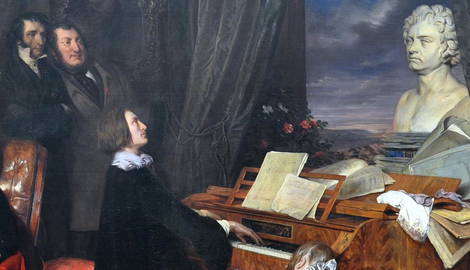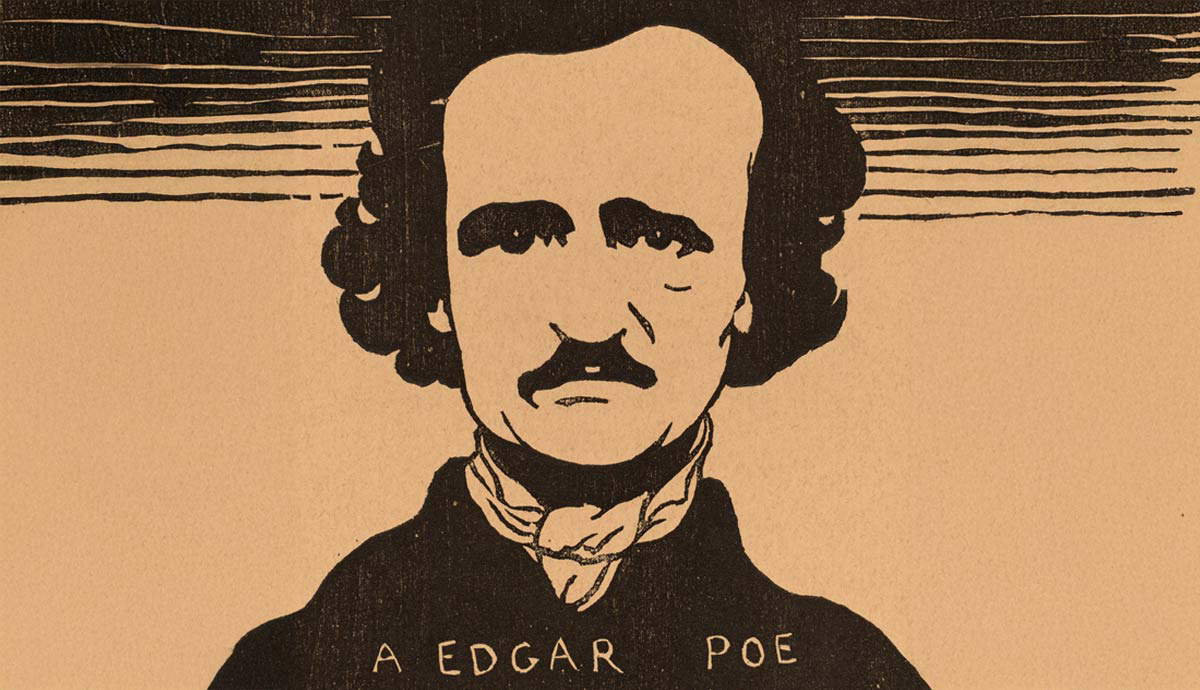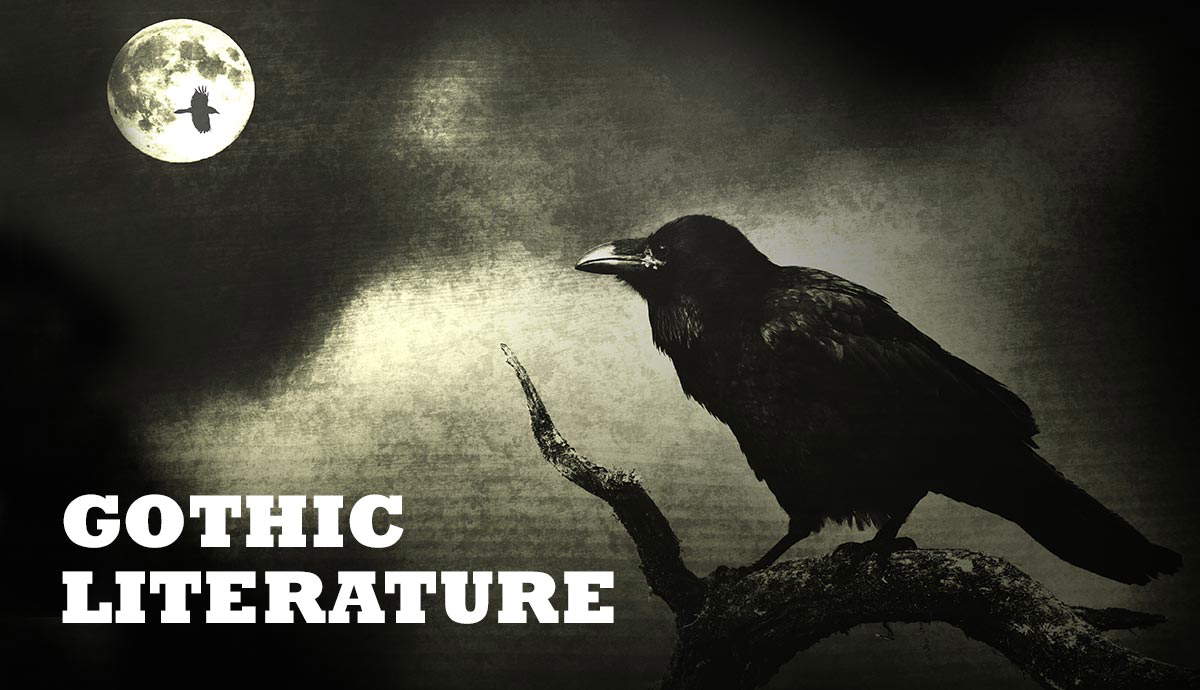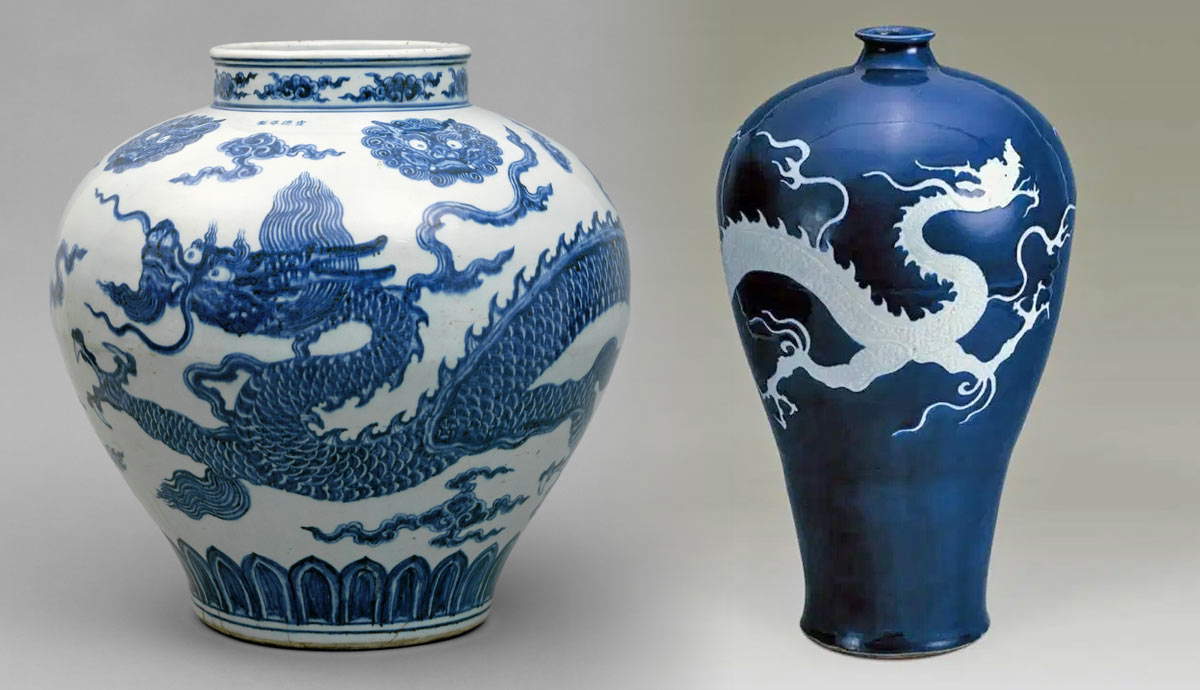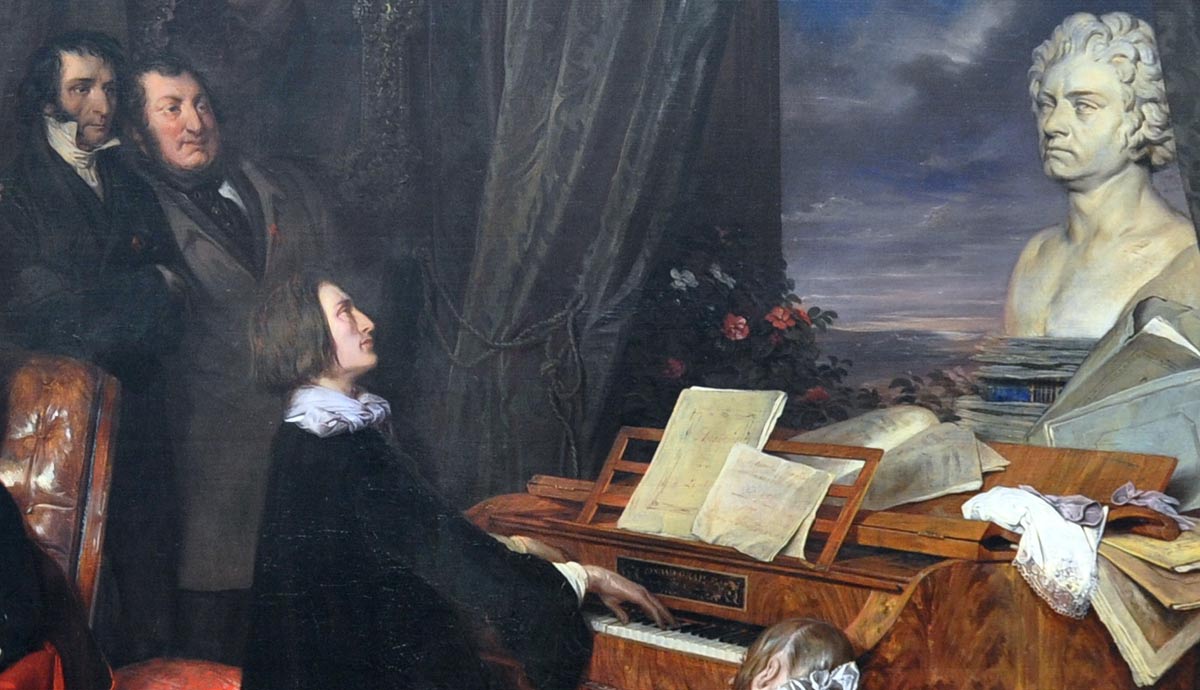
The Romantic Period, often placed in the 19th century but with roots in the late 18th century, is associated with individual self-expression and a reaction against the Age of Enlightenment’s emphasis on logic and rationality. This period also rebelled against industrialization. Examples of Romantic literature include works by William Blake and Samuel Coleridge.
The political turmoil and nationalism of the time influenced the Romantic Era in art, including music, such as the French Revolution and the Napoleonic Wars. This led to four primary artistic trends in Romantic Era compositions, reflecting the era’s social and political climate.
Historical Context of the Romantic Era in Music

The Romantic Era in music came to the party much later than the other arts. Some historians argue that the movement had started already with the composer Beethoven, who took music in a completely new direction. The approximate dates for the Romantic Era can be divided into two sets with variable start and end points: from about 1800 to 1890, or from 1820 to around 1900/1910.
Romantic works of literature include the likes of William Blake’s illuminated book Songs of Innocence and Experience (1789) and Samuel Coleridge Taylor’s poem Kubla Khan. Romantic literature is also considered the genesis of the Romantic Era — the Romantic poets and writers rejected the rationalism of the Enlightenment and favored emotional individualism.
The individual and their feelings became important and writers like Percy Bysshe Shelley, John Keats, and Lord Byron took the influences from their predecessors and filled their works with their personal love and loss. The natural world was also an important feature in their works. Following this line of thought, Gothic literature also came into being as escapism from the strait-laced taboos of English Victorian society. Some scholars argue that the Gothic tradition is a watered-down version of Romantic literature while others see it as a subset of the Romantic Era, but it depends on your point of departure. Fantastical works like Hector Berlioz’s Symphonie Fantastique based on a flight of fantasy is a prime example here.

Politically, the French Revolution and Napoleonic Wars also exerted their influence: nationalism rose, and national styles of music became a way to proclaim and reclaim national pride. Frédéric Chopin’s Mazurkas and Polonaises—the most important Polish dance—became a symbol of Polish pride because they used Polish rhythmic patterns. Smetana’s The Moldau and Jean Sibelius’s Finlandia are examples of Czech and Finnish nationalism as tone poems. During the 20th century, the Nazi government realized the power of music and (ab)used Richard Wagner’s music as a soundtrack to their nationalist and fascist policies.

Another contributing factor was the Industrial Revolution, which started in England in the 1750s and spread to the USA during the 19th century. Suddenly, goods could be mass-produced at a fraction of the cost. The middle class emerged and they had two commodities previous generations hardly had: more leisure time to pursue hobbies and more disposable income.
With the Industrial Revolution also came improvements in materials and instrument designs. Cast iron frames in pianos allowed composers like Chopin and Liszt to compose works that spanned beyond the traditional five-octave (one octave is equal to eight notes) range — suddenly they had seven octaves at their disposal. Additionally, composers had more stable instruments with a wider tonal range. Mechanical innovations like springs, rolled brass, and valves coupled with improvements in instrument manufacturing processes led to improved and entirely new instruments like the Wagner Tuba (conceived by Richard Wagner himself).
The Romantic Era Orchestra

While Beethoven broke the Classical mold in his Fifth Symphony by including trombones (in the last movement) and piccolos and a soloist and choir in the last movement of his Ninth Symphony, other composers pushed the limits further.
During the Romantic Era, composers sought to express their feelings and emotions — for this reason, they needed an expanded orchestra as an expressive vehicle. More instruments were added to the orchestra to give composers a palette of tonal colors. Longer and more dramatic works like operas, symphonies, and tone poems were made possible.
A wider range of percussion instruments were incorporated into the orchestra like triangles, tambourines, and bells to name a few. Tchaikovsky included cannons (click here to see the cannons in action) in his 1812 Overture — talk about taking non-traditional to the extreme!
The string section, although featuring the same instrument groups—violins, violas, violoncellos, and basses—became increasingly important. Subdivisions of the string section became possible by increasing the number of players. An increased number of players also meant composers could subdivide the strings into smaller groups to deepen the texture and add contrast to the work.
One example is Gustave Mahler’s Symphony No. 8 in E-flat Major (“Symphony of a Thousand”). To say the least, the orchestral forces are enormous — of the 120 instrumentalists, 70 are present in the string section alone! It also requires two mixed choirs, a boys’ choir, and eight soloists. Although Mahler’s symphony is from 1910, it gives an idea of the scale the orchestra expanded to in contrast to a Classical Period orchestra that comprised around 30 musicians.
Musical Nationalism

Although the symphony proverbially started to bulge at the seams, composers also composed more intimate works that captured the nationalist spirit.
Composers like Frédéric Chopin drew inspiration from his home country, Poland, in his musical works. His Polonaises are closely tied to Polish nationalism and his tragic feelings toward his home country during his lifetime. Throughout his lifetime Chopin composed eighteen Polonaises. His first (Polonaise Op. Posth.) was composed at the tender age of seven in 1817 and the last, known as the Polonaise-Fantasy in A flat major, Op. 61 in 1846. Throughout his lifetime he would develop increasing virtuosity, pianistic, and compositional technique as seen in his Polonaises. His Mazurkas, 57 in total, is a synthesis of Polish folk music elements featuring expressive nuances and are uncomplicated.
Franz Liszt, who hails from Hungary, composed his Hungarian Rhapsodies based on melodies he heard in the west of the country. Although some of the melodies he used are not authentic Hungarian melodies but rather compositions by upper-middle class persons or composers like József Kossovits, they are still Hungarian in spirit. The Hungarian Rhapsodies preserve numerous elements found in Hungarian gypsy music: slow and fast parts, improvisation, and the Hungarian gypsy scale. Additionally, the Hungarian dance called the verbunkos—a dance with numerous tempo changes—also influenced Liszt’s rhapsodies.
Jean Sibelius’s Finlandia, Op. 26 is sometimes interpreted as representing the rising nation of Finland gaining independence from Russia — something that finally happened in 1917. Most of the music is turbulent and rousing, symbolizing the nation’s struggle for independence. In the last movement, the Finlandia Hymn can be heard representing the people’s final triumph over their Russian overlords.
Two other examples include the tone poems Karelia Suite, Op. 26, and the Lemminkäinen Suite, Op.22. The latter is based on the Finnish Kalevala, a series of Finnish epic poetry based on oral folklore and mythology compiled by Elias Lönnrot.

However, not all nationalism stemmed from a composer’s own country. Verdi’s Aida is set in Egypt and was commissioned by the Cairo Royal Opera while Puccini’s Turandot is set in imperial China. These works may be interpreted as a blend of exoticism and “Otherness,” as defined by Edward Said, and an exploration of the music of other cultures.
Flights of Fantasy: Proliferation of Program Music

With much larger orchestras and a wide palate of sounds at their disposal, composers could express a wide range of emotions, ideas, and situations. Program music was not a “new” invention that came into existence during the Romantic Era — examples can be traced back to the late Renaissance Period.
In short, program music is distinguished from absolute music, which is music that is composed for the sake of music with no extra meaning attached to it. Contrasting with this is program music where external stimuli such as stories, moods, or nature inspire the music and find a footing in it. For example, in films, the music helps to establish a certain atmosphere and mood.
An example from the late Renaissance is by composer William Byrd called The Battell composed in 1578. Originally it was composed for the keyboard and arrangements for wind/brass ensembles also exist and perhaps best portrays the programmatic nature of the work.
Baroque examples include Vivaldi’s famous Four Seasons which are violin concertos representing the seasons through the year and each is accompanied by a poem. The most famous Classical example is perhaps Beethoven’s “Pastoral Symphony” which portrays a day in the countryside or his work Wellington’s Victory, Op. 91, portraying the Battle of Vittoria.
Hector Berlioz’s Symphonie Fantastique deserves a special mention because of its semi-autobiographical nature. It tells the story of an artist who takes an overdose of opium and his descent into delirium while facing the prospect of unrequited love. There is a well-researched documentary presented by Michael Tilson Thomas for the curious. One of the most important musical ideas in the work is what Berlioz calls the “ideé fixe” (fixed idea) — a recurring melodic theme that represents the main character. Throughout the work, it is altered as the main character’s situation changes. Wagner also used this concept in his Ring Cycle of operas but called it a leitmotif, or leading motif.
Berlioz handed out programs at the performance to explain the musical ideas and story to help the audience understand the music. Over five movements the fictional main character will experience five different scenarios, but the story arc does not bode well for him. It starts with Reveries and Passions (00:00) leading to A Ball (16:20), then to a romantic stroll titled Scene in the Fields (23:04). Unfortunately, the opium-induced dream takes a turn for the worse in the March to the Scaffold (39:33). As if that was not bad enough, he experiences a Dream of the Witches’ Sabbath (46:48). Poor guy!
Opera Becomes Grand and Epic
With all the innovations going on, the rise of virtuoso performers, and the expansion of the orchestra, early Romantic Era operas also became grander. Apart from the exoticism in works like Aida and Turandot, other composers made their mark too.
The Romantic Era is known as the golden age of opera — the Italian bel canto (literally, beautiful singing) style took center stage. Bel canto singing demands excellent technical control from the singer and it gave rise to the operatic diva and divo — the celebrities of their time. In Italy, opera dominated the musical scene, and composers dominated the scene with their exaggerated realism (“verismo”) and penchant for the melodramatic.
During the late Romantic Era, opera reached a point of no return that still reverberates through it today. And it was all thanks to one of the biggest names in music history: Richard Wagner.
Richard Wagner took opera to the extreme with his adventurous harmonies like the Tristan chord, his pioneering use of leitmotifs, and the extreme, 15-hour length spread over four nights of his Der Ring Das Nibelungen. Richard Wagner is also credited with introducing the concept of the Gesamtkunstwerk (the “total artwork”).
Virtuoso Performers Take Center Stage

While the church or royal patronage funded music in previous centuries, composers still had to adhere to certain prescribed ideals. The rise of the Industrial Revolution meant the middle class had more disposable income to host concerts at home. They could also attend concerts in large performance venues. The solo recital we know today has its roots in the Romantic Era — performances would center on a solo artist’s compositions.
Notable virtuosi include Clara Schumann, Franz Liszt, Nicolo Paganini, Johannes Brahms, Jenny Lind, and Frédéric Chopin — to name a few. The end of church and noble patronage allowed composers to express their creative urges more personally.
Composer performers wrote technical and demanding pieces showing off their technique and prowess to astound audiences. Because of their virtuosity, the “Cult of the Artist” quickly developed. Performers like Liszt and Jenny Lind led to them being elevated to “vaunted genius” status, which is comparable to today’s celebrities. Lisztomania and Lindomania-inspired merchandise allowed people to buy household items and sheet music with Lind’s name on them and own a “piece” of the artist.
Of course, audiences needed to understand the concerts they attended, and the music critic became important too. Artistic expression and audience appeal and understanding created tension between performers and audiences. Music critics helped the lay audience members understand the performances and helped them navigate the new world of music happening around them.
The Piano Becomes Important

During the Baroque Period, the harpsichord did not enjoy the limelight and was used to fill in harmonies as an accompanying instrument. However, solo works for the keyboard were also important but the cost meant that few homes owned one of these instruments.
Technological advances improved the tone of the harpsichord and the pianoforte—the precursor to the modern piano—started to emerge during the Classical Period. It was still not as loud as our modern pianos but offered composers the opportunity to specify loud or soft in their compositions.
A Piano in Almost Every (Middle Class) Home

The Industrial Revolution led to the rise of the middle class in Europe and America. Families had more disposable income and domestic music-making became a popular pastime. Families would purchase pianos and hire music teachers; sons were encouraged to learn string and woodwind instruments while daughters learned singing and played the piano.
The piano became a symbol of leisure and social status. A piano at home became a major source of entertainment. Before music recordings became widespread, people had to rely on live music for entertainment.
Composers began to write piano pieces that could be used at home to entertain and educate. Often amateur pianists would purchase sheet music editions produced by virtuoso pianists to emulate their playing style. Although they could not play the music as perfectly as those performers they adored, they had the opportunity and satisfaction to play the music they liked.
Numerous piano transcriptions of famous symphonies and operas saw the light. Franz Liszt’s piano transcriptions of Beethoven’s symphonies are an excellent example of this phenomenon. Although they are fiendishly difficult, they gave people the opportunity to bring the concert hall into their homes.
Composers like Chopin and Liszt elevated the etude, or “practice piece” to new heights to show off virtuosity. Works like The School of Velocity, Op. 299 and The Art of Finger Dexterity, Op. 740 by Carl Czerny are two prime examples of instructional compositions that elevated the piano practice to an enjoyable activity.
Important Musical Forms During the Romantic Era

During each historical period in music there are prevailing forms and ideas, and the Romantic Era was no different. Below is a brief selection of some of the most famous forms apart from the ones mentioned above.
In Germany, the Lied (plural Lieder) was a musical setting of German poems with piano accompaniment. Franz Schubert, who straddled the line between the last breaths of the Classical Period and the dawn of the Romantic Era like Beethoven, was a pioneer of Lieder. Song cycles became increasingly popular with Schubert’s Die Winterreise, D 911 (The Winter Journey) being one of his most popular cycles.
The Arabesque on the other hand was a composition inspired by Arabic architecture and culture. Another example of Romantic Era exoticism.
A Nocturne is a character piece that evokes the feelings and ideas of nighttime. Initially, it was intended to be performed outside at night. Irish pianist and composer John Field is considered the pioneer of the form and wrote the first of these pieces in 1814. It reached its zenith in the piano compositions of Chopin.
The impromptu, as the name suggests, is a short piece of music that is meant to sound as if the player was improvising it on the spot. Impromptus usually are composed for a single instrument and mostly for the piano.
Post-Romanticism and Impressionism

Self-expression was at the heart of the Romantic Era along with breaking the rules set forth in the Classical Period. As the 19th century drew on, composers and other artists were becoming more abstract in their expression.
Artists wanted to break the rules set forth by their predecessors and create atmospheric works filled with their perceived impression of what they experienced through their senses. The impressionist painters embraced the scientific advances in terms of new pigments and used them to create exact representations of color and tone.
While the Romantic Era focused on tone color, the impressionist composers like Debussy pushed these ideals even further. An example is his composition La cathédrale engloutie (The Sunken Cathedral) which created the idea of a sunken cathedral rising from the water. Chanting priests, chiming bells, and the organ are heard before the cathedral sinks back into the water leaving the listener with the impression of the cathedral.
The Romantic Era is one of the most beloved periods in music history because of its expressiveness and vast and colorful repertoire. Its penchant for telling dramatic stories filled with color paved the way for music that is almost impossible to define yet is comfortable on the ear.
